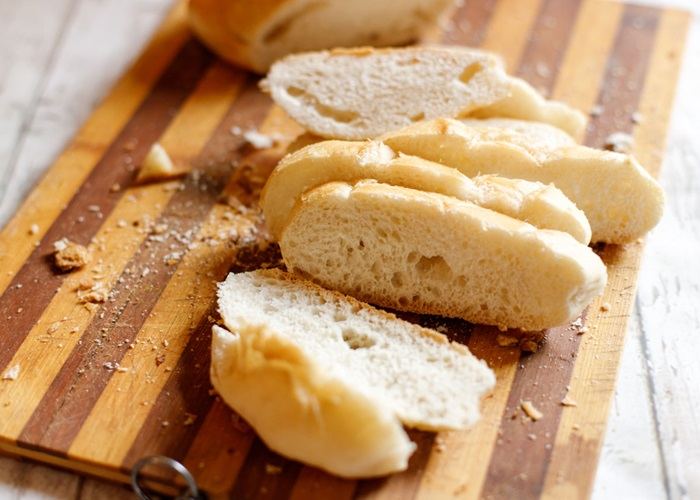White bread has long been a staple in many households, enjoyed for its soft texture and versatile uses. However, for individuals with diabetes, the question of whether white bread is safe to consume becomes more complex. Diabetes management requires careful attention to dietary choices, especially when it comes to carbohydrates that can rapidly increase blood sugar levels. In this comprehensive guide, we will explore the impact of white bread on blood sugar, provide detailed information on healthier alternatives, and offer practical tips for diabetics who wish to enjoy bread without compromising their health. Whether you’re newly diagnosed or have been managing diabetes for years, this article promises to enrich your understanding of how to make informed food choices.
Understanding Diabetes and Blood Sugar Management
Diabetes is a chronic condition characterized by high blood glucose (sugar) levels. There are two main types: Type 1 and Type 2. Type 1 diabetes occurs when the body does not produce enough insulin, while Type 2 diabetes results from the body’s inability to use insulin effectively. Proper management involves monitoring carbohydrate intake, as these nutrients break down into glucose and can cause spikes in blood sugar. For diabetics, choosing foods that have a lower glycemic index (GI) is crucial, as they cause a slower and more gradual rise in blood sugar levels.
The Impact of White Bread on Blood Sugar
White bread is made from refined wheat flour, which has had the bran and germ removed during processing. This refining process strips away fiber and essential nutrients, leaving primarily starch. When consumed, white bread is quickly broken down into simple sugars, causing a rapid spike in blood glucose levels. For diabetics, this can lead to fluctuations in energy, increased hunger, and difficulty in maintaining stable blood sugar levels. Over time, frequent consumption of high-GI foods like white bread can contribute to complications associated with diabetes, such as heart disease and nerve damage.
Healthier Alternatives to White Bread
For diabetics looking to enjoy bread without the negative effects on blood sugar, there are several healthier alternatives:
Whole Grain Bread
Ingredients: Whole grain flours, whole wheat flour, oats, barley, and other intact grains.
Benefits: Rich in fiber, vitamins, and minerals. Fiber slows digestion, preventing rapid spikes in blood sugar.
How to Make: Combine whole grain flours with water, yeast, and salt. Allow to rise and bake at moderate temperatures.
Sourdough Bread
Ingredients: Whole wheat flour, rye flour, sourdough starter (a mixture of flour and water fermented with wild yeasts).
Benefits: Lower GI due to the fermentation process, which breaks down some of the starches. Contains beneficial probiotics.
How to Make: Mix flour and water to create a starter. Let it ferment for several days. Add this starter to dough and allow to rise before baking.
Gluten-Free Bread
Ingredients: Almond flour, coconut flour, tapioca starch, xanthan gum.
Benefits: Suitable for those with gluten sensitivities. Often lower in carbs than traditional bread.
How to Make: Blend gluten-free flours with eggs, milk, and baking powder. Bake in a loaf pan until golden brown.
Low-Carb Breads
Ingredients: Psyllium husk, almond flour, eggs, cheese.
Benefits: Very low in carbs, making them ideal for diabetics following a ketogenic diet.
How to Make: Mix psyllium husk with almond flour, eggs, and melted cheese. Bake in a greased pan until firm.
Practical Tips for Diabetics
Managing diabetes while enjoying bread requires careful planning and mindful eating. Here are some practical tips:
Choose Low-GI Options: Opt for breads made from whole grains, legumes, or seeds, which have a lower impact on blood sugar.
Monitor Portion Sizes: Even healthy bread options should be consumed in moderation. Use smaller slices or half portions.
Pair with Protein and Fat: Eating bread with protein-rich foods like eggs, cheese, or nuts can slow digestion and prevent blood sugar spikes.
Check Labels: Always read nutrition labels to ensure the bread contains minimal added sugars and preservatives.
Consult Healthcare Providers: Regularly consult with doctors or dietitians to adjust dietary plans based on individual needs and blood sugar responses.
Cultural Significance of Bread
Bread holds significant cultural importance across various societies. From the ancient Egyptians to modern-day bakeries, bread has been a symbol of sustenance, community, and tradition. In many cultures, sharing bread represents hospitality and unity. For diabetics, finding suitable bread alternatives allows them to participate in these traditions without compromising their health. By exploring healthier options, individuals can maintain cultural connections while adhering to dietary restrictions.
Conclusion
In conclusion, while white bread is not an ideal choice for diabetics due to its high glycemic index and potential to cause rapid blood sugar spikes, there are numerous healthier alternatives available. By opting for whole grain, sourdough, gluten-free, or low-carb breads, diabetics can enjoy the taste and versatility of bread without negatively impacting their blood sugar levels. Managing diabetes requires thoughtful consideration of dietary choices, but with proper knowledge and planning, it is possible to indulge in bread safely. Embrace the joy of discovering new bread options, and let this guide inspire you to make healthier, more informed food choices.
This guide provides a thorough exploration of the impact of white bread on diabetics, covering its history, nutritional considerations, healthier alternatives, practical tips, and cultural significance. With such comprehensive information, you’ll be well-equipped to navigate the world of bread while maintaining optimal health.
Related topics:


